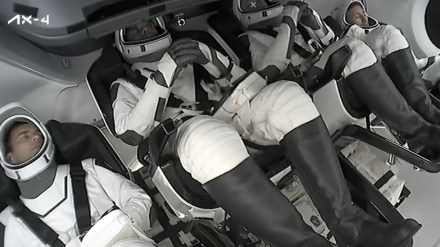There are several reasons to celebrate the successful launch of the Axiom-4 (Ax-4) mission. First, it marks the beginning of India’s human spaceflight. Though the mission was undertaken on a commercial flight operated by Houston-based private company Axiom Space, it is a collaboration between Nasa, Indian Space Research Organisation (Isro), European Space Agency (Esa), and SpaceX. Group Captain Shubhanshu Shukla, who’s piloting the mission, has become only the second Indian to travel to space. And when the spacecraft docked at the International Space Station (ISS) on Thursday, he became the first ever Indian to visit Nasa’s orbiting laboratory.
Shukla’s trip comes 41 years after cosmonaut Rakesh Sharma became the first Indian to fly to space aboard a Russian Soyuz in 1984. But Sharma’s achievement was largely symbolic and of inspirational value as India did not at the time have the infrastructure and the capability to make productive use of his learnings. In comparison, Shukla’s trip will have huge practical implications.
The experience Shukla will gain during his 14-day mission will help India’s space efforts immensely. Axiom-4 has scheduled several experiments, the results of which would help Isro execute its own manned spaceflight, Gaganyaan, two years later. Isro’s next big project, after Gaganyaan, is to build its own space station. That is a massive infrastructural endeavour. Shukla would be in a position to offer critical inputs here as well. There are at least seven experiments, relating to impacts on human health and growth of crops in microgravity environments, which Isro has designed for the mission.
One of the experiments relates to the study of the growth rate, cellular responses, and biochemical activity of cyanobacteria — a group of bacteria that are known to produce energy through photosynthesis just like plants. There is growing interest in studying this microorganism as it may offer the key to deep space exploration and long-term presence of humans on the moon or other planets: a self-sustaining system for oxygen production without need for resupply from earth.
Another experiment would look at the impacts of spaceflight on germination and growth of sprouts in space. There is another to study the impact on crop seeds as well. Then there is an experiment that will focus on the growth, metabolism, and genetic activity of microalgae, which are being studied for its potential as a sustained oxygen generation system as well as a food source in space. The zero-gravity conditions in space offer a unique setting for studies that are extremely difficult to do on Earth.
For example, one of Isro’s experiments relates to the study of muscle behaviour. Muscle degradation can be because of natural causes; it can also be affected by a person’s weight. On Earth, it is very difficult to decouple these two causes because of gravity. Space’s zero-gravity environment gets rid of the weight factor and allows the study of changes in muscles purely due to natural reasons, which can lead to breakthroughs in the understanding of human health.
In the last few years, Isro has carried out a number of important missions that have placed India in a very small group of countries with cutting-edge space capabilities. Thus, Axom-4 is a giant leap forward. It’s not just about sending an astronaut to space; it’s about building a foundation for future space exploration and technological innovation. The mission’s scientific objectives have the potential to benefit humanity.
